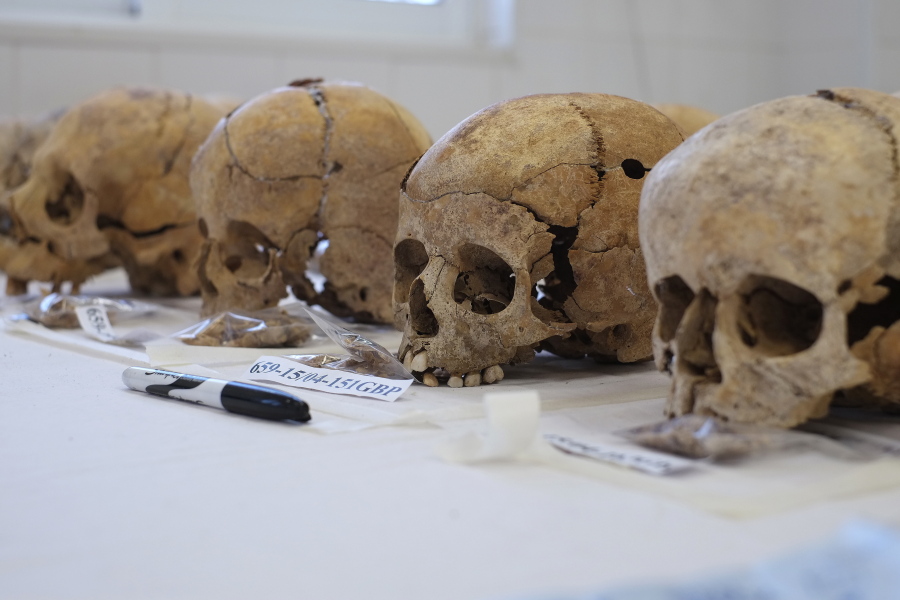NICOSIA, Cyprus — With glue gun in hand, Turkish Cypriot anthropologist Sinem Hossoz meticulously pieces together tiny fragments — the pulverized skull of a child, one of the youngest victims of conflict on ethnically divided Cyprus.
Paul-Henri Arni, the U.N.-appointed member to the Committee on Missing Persons, says such things must be done.
“It’s for the dignity of the dead,” he says, but also to spare relatives the shock of seeing a smashed skull when the remains are returned to them.
“The skull in all cultures, including here, is the center of the human person, it’s the soul,” Arni said at the CMP laboratory on the grounds of the disused Nicosia airport straddling a U.N. controlled buffer zone where skeletal remains are assembled for identification.
With international donations, the CMP has worked diligently for 11 years to help heal a gaping wound from this east Mediterranean island’s tortured past and foster its future reconciliation. It has unearthed and identified more than a third of the 2,001 Greek and Turkish Cypriots who vanished during fighting between the two sides in the 1960s and during the summer of 1974. That’s when a coup aiming at union with Greece triggered a Turkish invasion that split the island into a breakaway, Turkish Cypriot north and an internationally recognized south.
Time is working against the committee. Potential eyewitnesses who could help pinpoint graves are dying out, while unceasing construction sometimes makes such burial sites forever inaccessible.
To expedite its work, Arni says the CMP is now sifting through archival information it has for the first time gained access to from the U.N., the International Committee of the Red Cross and some six countries that had dispatched peacekeeping troops to Cyprus at the time of the fighting.
It’s also investing in new technologies like the Geographic Information System, or GIS, that links all information gathered from archives, investigators and eyewitnesses to give a more exact estimate of possible burial sites.
Gulden Plumer Kucuk, the CMP’s Turkish Cypriot member, says she expects the new approach will begin to produce results within a year. She estimates the archival search will boost the inflow of information by up to 20 percent.
“The important thing is that we do everything in our capacity … so when we turn our faces to the families, we should be able to say that we did everything for them,” she said.
The decades-long agony of the relatives of the disappeared is what drives Romanos Liritsas, a Greek Cypriot researcher with the committee.
It’s “the humanitarian aspect that edges us to speed up, because the relatives have been waiting much too long to find their beloved ones,” says Liritsas, standing in a field in the northern, Turkish Cypriot half of the island where colleagues, acting on an tip, are searching for a missing soldier’s remains.
Greek Cypriot Eleni Kyriakou lived long enough to bury her son. The 88-year-old sat in a wheelchair at the head of the grave into which the small, wooden flag-draped coffin carrying the remains of her son Epiphanios was lowered — a burial with full military honors at Makedonitissa military cemetery.
The remains of Epiphanios, a 20-year-old second-lieutenant, were found along with those of five other comrades in a makeshift grave after vanishing on Aug. 15, 1974, during a retreat from of advancing Turkish troops.
A Turkish Cypriot man who recently recalled seeing the soldiers’ unburied bodies in a gully shortly after fighting ceased, said Sevgul Uludag, a Turkish Cypriot journalist who for years has been gathering information on the whereabouts of the missing. The Turkish Cypriot man was 7 years old at the time, riding atop a donkey led by his grandfather, who had buried the soldiers.



